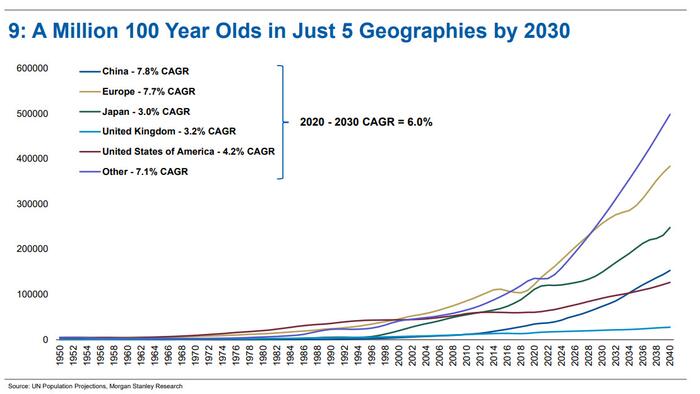In the era of unprecedented longevity, global demographics are shifting dramatically, presenting both opportunities and challenges for various sectors. “Live long and prosper,” a famous phrase from 1960s science fiction, has transitioned from mere entertainment into a pressing reality as people across the globe live longer and healthier lives. This evolution toward an aging population is a focal point for Morgan Stanley’s global research, emphasizing its implications for public policy, corporate strategies, and market dynamics. The report by Ed Stanley highlights that by 2030, there will be over a million centenarians residing in five major geographies, signifying the urgent need to adapt to an aging society.
The ramifications of an aging population extend beyond individual health; they impact the economy profoundly. With increasing life expectancy, there will be heightened demands on healthcare systems, pensions, and social infrastructure. Governments are faced with the challenge of reforming policies to accommodate a larger older demographic, aiming to ensure that these individuals have adequate support and resources. Organizations and corporations also need to recalibrate their strategies to align with the shifting consumer base. As the older population grows, businesses must consider the preferences and needs of this demographic, which may include products tailored to their health and lifestyle requirements.
The financial implications of longevity also warrant significant attention. Aging populations are expected to influence market trends across numerous sectors, including healthcare, pharmaceuticals, and technology. With a rising number of older individuals, there is likely to be increased demand for innovative healthcare solutions, digital health technology, and wellness products that cater to their specific needs. Companies investing in these areas stand to benefit significantly, offering promising avenues for growth in an otherwise challenging economic landscape.
Moreover, the intergenerational dynamics will also change as the workforce ages. As older employees continue to remain in the job market longer, there will be a pressing need for organizations to create an inclusive environment that accommodates their skills and experiences. Companies must adopt policies that address age-related biases and promote diversity within teams. This can enhance productivity and innovation while ensuring that valuable knowledge is retained within the workforce instead of being lost to retirement.
The implications of longevity touch on social structures as well, as families and communities navigate the changes brought by an aging populace. Older adults often play critical roles in family dynamics, and their presence can influence the socioeconomic landscape. As the traditional structures shift, the government and communities should explore ways to enhance the quality of life for seniors. Investments in age-friendly infrastructure, social services, and community programs are essential to ensure successful integration and support for this demographic.
As we look towards the future, the age of aging presents a complex but opportunity-rich landscape. As Morgan Stanley highlights, the integration of older adults into society requires comprehensive strategies that encompass health, policy, market analysis, and social responsibility. Embracing the aging trend necessitates that both public and private sectors collaborate closely to create sustainable frameworks that benefit all ages. By proactively adapting to these demographic shifts, we can pave the way for an inclusive society where longevity is met with prosperity, ensuring that the phrase still resonates deeply in both policy discussions and everyday life.

